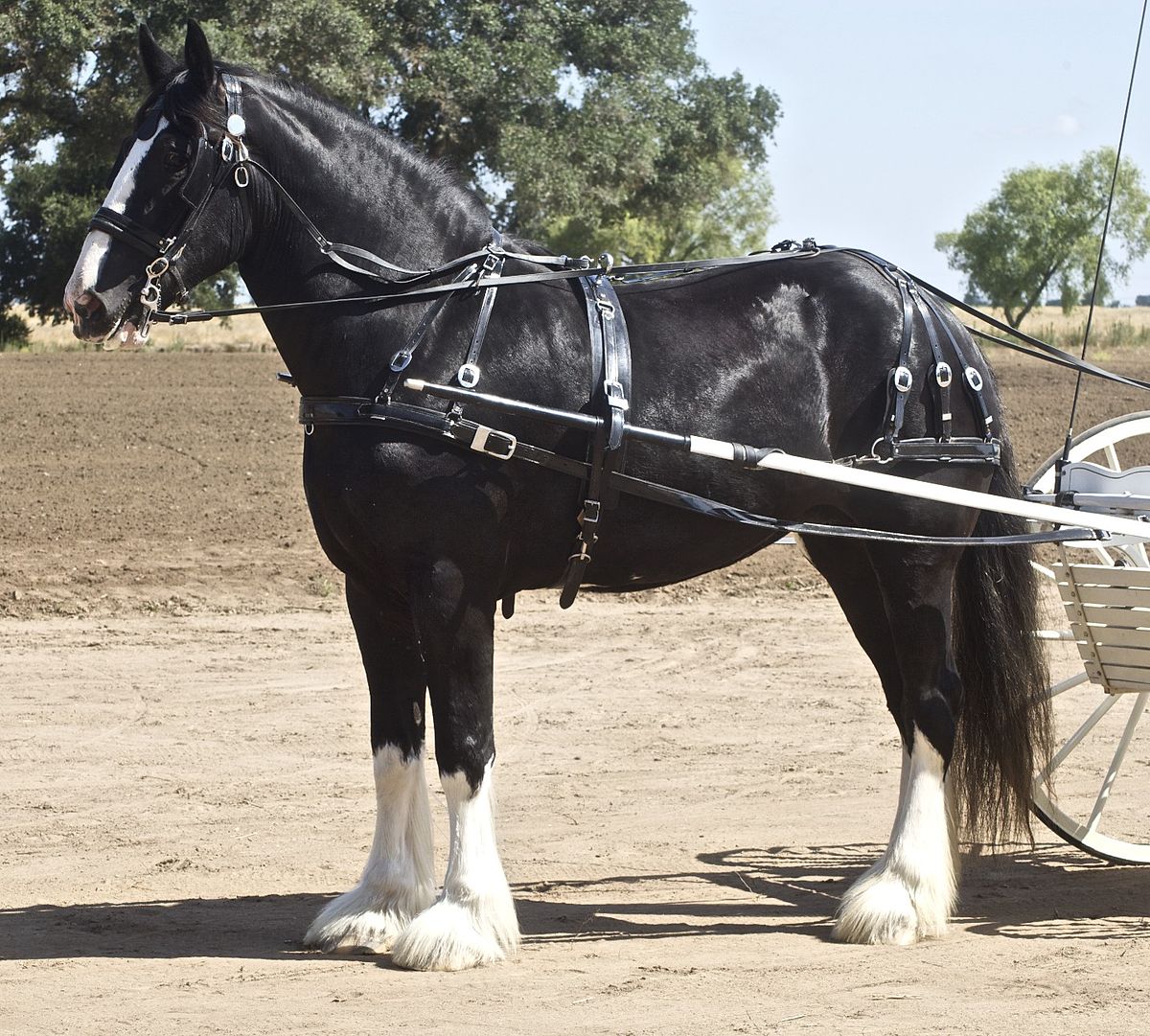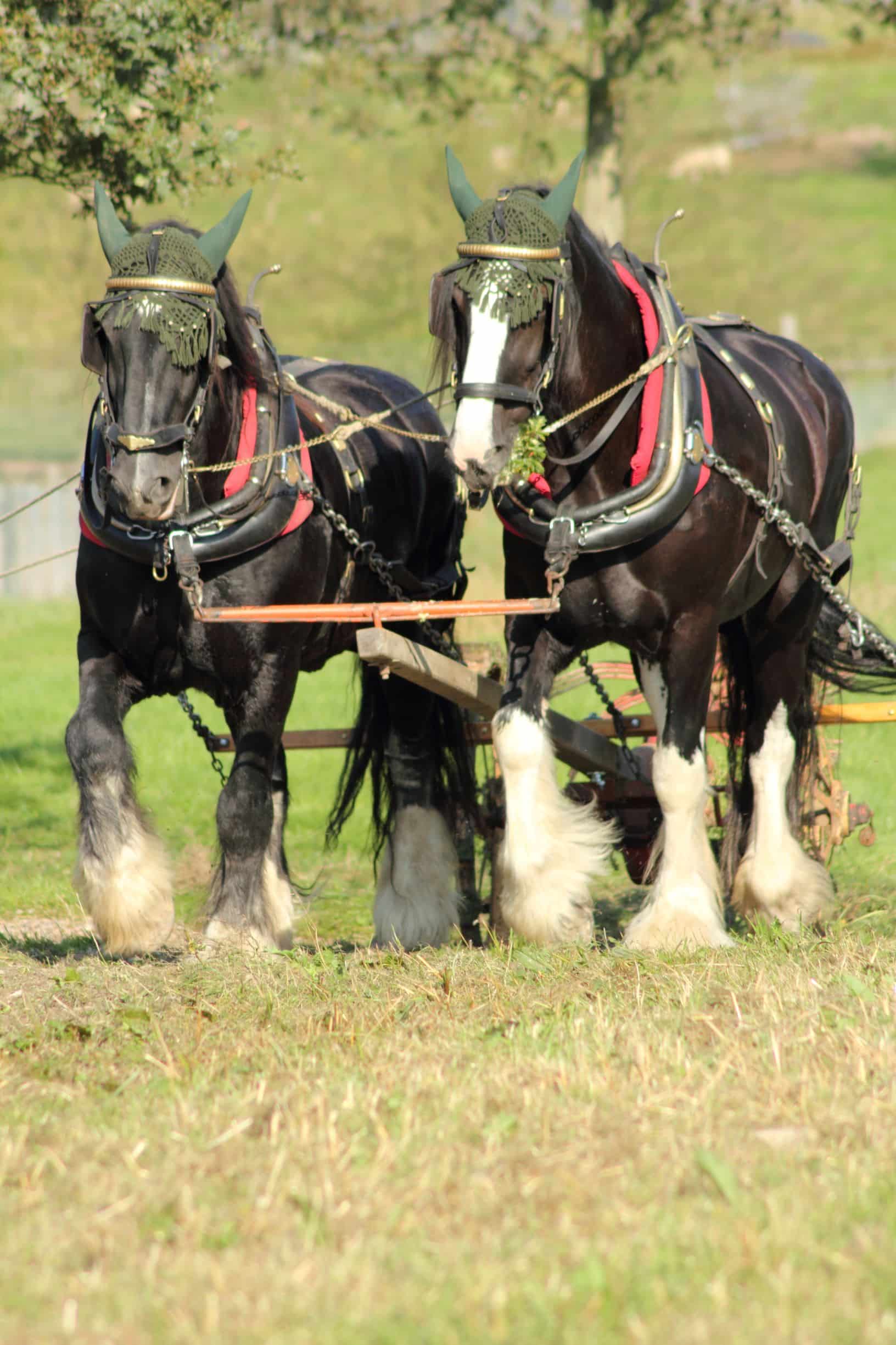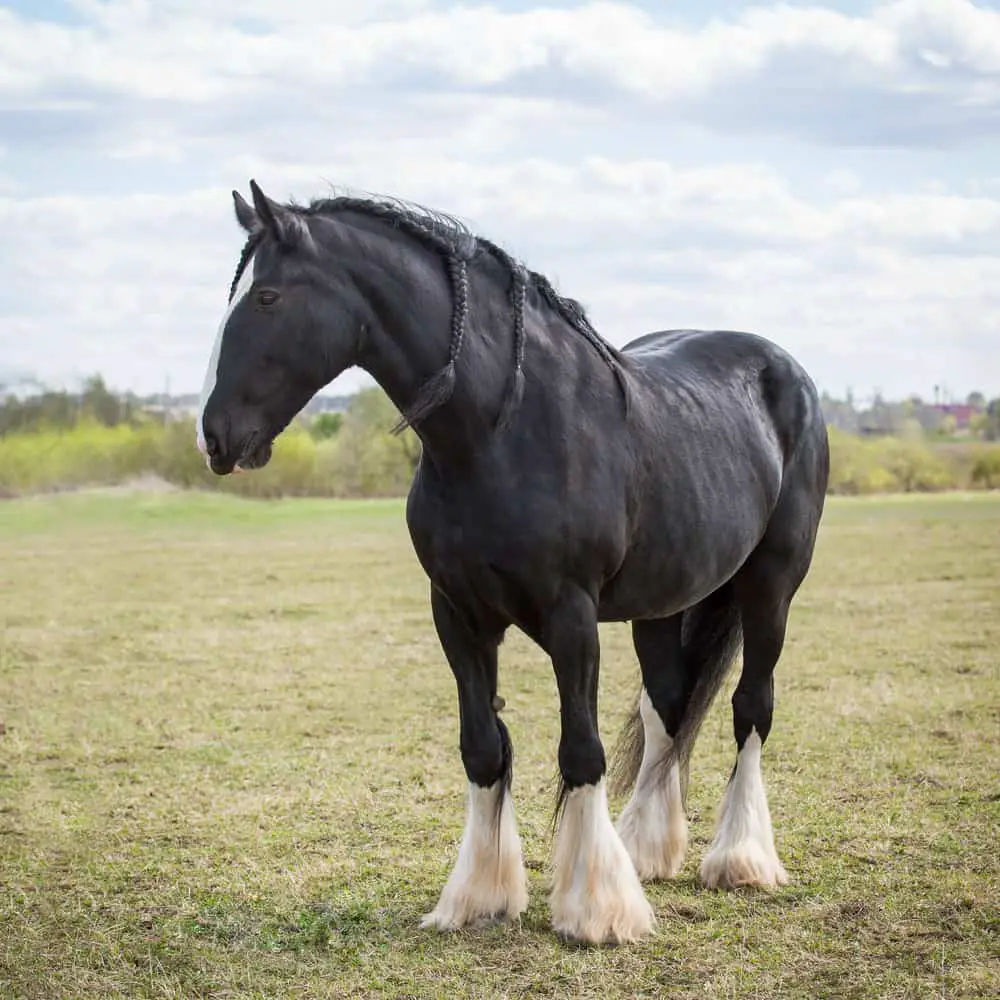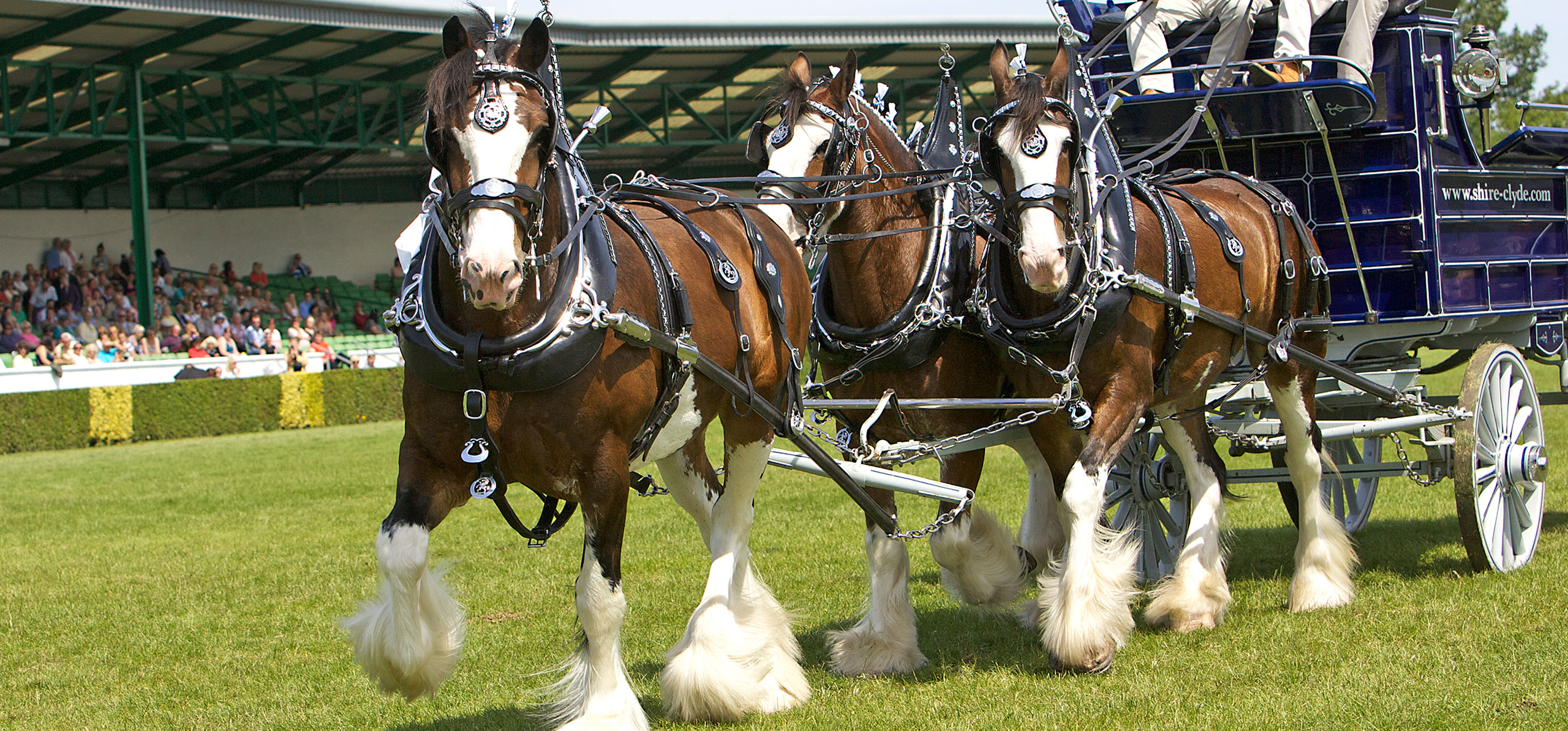Introduction to the Shire Horse

The Shire horse, a breed that emanates an air of nobility and grandeur, is renowned for its significant stature and gentle disposition. As a historical breed, these equine giants have roots deeply embedded in the agricultural and industrial revolutions, where their strength and size were indispensable. Today, they continue to captivate horse enthusiasts and the public alike with their impressive presence.
In addressing the curious question of “How Tall Is A Shire Horse?”, one must look to the breed’s standards.
- The shire horse is the tallest horse breed, with an average height ranging from 16 hands (64 inches) to 18 hands (72 inches).
- Some individuals tower even further, reaching 19 hands (76 inches) or more.
- Generally, stallions stand taller than mares, with the average height at the withers of grown stallions being around 178 cm (17.2 hands).
Unveiling the Shire Horse’s Magnificent Size

When we delve into the characteristics of the shire horse, their remarkable size is immediately apparent. These equine titans are not just tall but also possess a considerable body mass that highlights their historical significance as laboring giants. The impact of witnessing a shire horse in its full glory is profound, as they carry their considerable bulk with a regal grace.
Shire Horses: A Glimpse Beyond Average Measurements
While the shire horse is known for its stature, it’s important to note that their weight is just as significant. An adult shire horse can weigh:
- Minimum Weight: 1,800 pounds
- Maximum Weight: 2,400 pounds
This substantial weight range emphasizes the breed’s muscular build and its historical role as a workhorse capable of handling heavy loads. The shire horse’s physical form, designed for endurance and strength, is a testament to its iconic status within the draft horse family.
Shire Horse Proportions Relative to Work
The sheer bulk of the shire horse is tailored to meet the demands of the tasks they were originally bred to perform. Beyond their height, the overall size of these horses was crucial for:
- Efficiently plowing fields
- Hauling substantial weights in industrial settings
- Demonstrating impressive power during special occasions
Their grand stature was not an accidental trait but rather a product of selective breeding aimed at maximizing their aptitude for hard labor.
Appreciating the Shire Horse’s Robust Girth
The circumference of a shire horse offers another dimension to their grand size. This measurement is a reflection of their deep chest and ample ribcage, which houses the potent respiratory and cardiovascular systems needed for sustained heavy work. Their girth is just another aspect that underlines the breed’s capacity for endurance and their versatility in various roles throughout history.
The stature and size of the shire horse, from their weight to their comparison with other draft breeds, underscore their unique place in the equine world. These horses are not only a symbol of equine majesty but also of the practical roles they have played across centuries, marked by their indomitable strength and durability.
Exploring the Shire Horse’s Historical and Developmental Journey

When we immerse ourselves in shire horse breed info, we uncover a lineage steeped in the annals of English history. These equine behemoths have evolved from their warhorse origins to become symbols of peace and agricultural progress. Their adaptability has allowed them to play a critical role in shaping the rural landscape of England.
Pedigree and Development of the Shire Horse
The ancestry of the shire horse traces back to the Old English Black Horse, with their size being augmented in medieval times through the introduction of Dutch Friesian genetics. This breed has borne witness to, and participated in, the transformation of British history, from the battlefield to the farmland.
Key Developmental Milestones of Shire Horses
The life stages of the shire horse reveal a fascinating growth trajectory. Key milestones in their development include:
- Weaning: This phase marks the onset of independence at about half a year old.
- Yearling: A period of swift growth and the commencement of rudimentary training.
- Adolescence: Young males begin to exhibit enhanced muscularity.
- Adulthood: At 4-5 years, these horses reach their full size and capacity.
Comparing Shire and Clydesdale Dimensions
A comparison of shire horse vs clydesdale size often intrigues draft horse enthusiasts. Shires generally outsize Clydesdales, standing as the most towering draft horse breed. For example:
- Shire Horse: Heights span from 16 to 19 hands, with some towering above 20 hands.
- Clydesdale: Typically measures between 16 to 18 hands, with a comparatively leaner build.
These figures illustrate the shire’s preeminence in terms of height in this equine category.
Transition in the Shire Horse’s Roles
Shires have adeptly transitioned from their martial origins to peaceful endeavors. Their historical roles have expanded to include:
- Revolutionizing agricultural practices through enhanced plowing and transport capabilities.
- Contributing significant horsepower during the nascent stages of the industrial era.
- Captivating audiences in parades and exhibitions with their dignified bearing.
These role evolutions have further solidified the shire’s enduring legacy.
Distinguished Shire Lineages
Certain shire bloodlines have garnered acclaim for exceptional qualities that are particularly desirable in breeding programs. These esteemed lines contribute to refining both physical and temperamental traits in the shire horse breed.
Shire Horse Influence in Crossbreeding Efforts
The genetic heritage of the shire horse extends beyond purebred lines, playing a pivotal role in crossbreeding endeavors. These efforts have not only enriched other draft breeds but also sport horse varieties, demonstrating the shire’s broad genetic impact.
Investigating the rich tapestry of the shire horse’s breed, from their storied past to their physical supremacy, reveals the depth of their impact. The tallest shire horse exemplifies the awe-inspiring nature of this breed, a testament to their storied legacy and continued influence in the equine realm.
Unique Aspects and Adaptability of Shire Horses

Investigating the Shire horse’s attributes further, we uncover a breed designed for resilience and strength, coupled with a temperament conducive to both work and companionship. Beyond their astonishing scale, Shire horses possess a suite of physical and behavioral traits that endear them to enthusiasts and professionals alike. Their heritage is one of both aesthetic appeal and utilitarian function, making them as versatile as they are striking.
Physical Features of Note
Shire horses boast a strong constitution, a legacy of their genetic lineage and the laborious roles they have historically filled. From their solid hindquarters to their expansive shoulders, each anatomical detail contributes to their overall power and capability. Beyond stature, these horses are also characterized by:
- Kind and large eyes, denoting their friendly demeanor.
- Luxuriant manes and tails that enhance their noble image.
- Feathers – the hallmark of the breed – adorning their lower legs.
Coat Varieties and Their Allure
The Shire horse’s coat, available in several colors, adds to their visual impact. While black is prevalent and often paired with a contrasting white blaze, other shades include:
- Grey, from pale to dark dapples, exuding a stately glow.
- Bay, offering a warm, auburn appeal.
- Roan, where white hairs blend with the base color for a unique finish.
The array of colors not only contributes to their aesthetic beauty but also plays a part in their selection for shows and breeding.
Behavioral Traits and Disposition
The Shire horse’s calm and steady nature is as much a hallmark of the breed as its physical prowess. They exemplify several behavioral qualities:
- Composure, maintaining tranquility in various situations.
- Quick learning abilities, facilitating responsiveness to training.
- Natural inclination to work, showcasing their diligent spirit.
- Affable interactions with humans, indicative of their gentle nature.
The Shire horse embodies the perfect balance between immense capability and a serene demeanor, making it an excellent choice for a broad range of activities.
Shire Horses: Masters of Multiple Disciplines
The Shire horse’s proficiency in adapting to diverse roles is commendable. From their historical evolution to their current applications, they have proven their versatility in many fields:
- Leisure riding benefits from their dependable nature.
- Equine-assisted therapy programs, where their compassionate temperament shines.
- Competitive exhibitions, where they dazzle spectators with their splendor and skill.
The Shire horse’s flexibility in function is a clear indicator of the wide-ranging characteristics unique to the breed.
The synthesis of the Shire horse’s formidable structure, placid temperament, and the rich spectrum of coat colors and markings underlines their distinctive standing within the equine community. The enduring allure of the Shire is continually reinforced by these traits, ensuring the breed’s significance in both its storied past and in contemporary equine activities.
Essential Care for Shire Horses

Owners and caretakers of Shire horses must adopt a dedicated care regimen to meet the specific needs of this breed, considering their large size and draft horse lineage. Attention to detail in their daily management is key to ensuring these equine giants remain healthy and happy.
Customized Nutrition for Shires
A Shire horse’s imposing size demands a tailored diet to sustain their energy levels and robust physique. The focus should be on:
- High-Quality Forage: The primary component of their diet, providing essential fiber.
- Controlled Grain Portions: To complement forage while preventing weight-related health issues.
- Consistent Water Supply: Ensuring they stay well-hydrated to support their bodily functions.
Regular body condition assessments are crucial to manage their diet and prevent the onset of obesity.
Attentive Grooming Practices
Regular grooming goes beyond enhancing the Shire’s appearance; it’s vital for their well-being. Focus on:
- Feather Maintenance: To prevent skin problems, clean and detangle their distinctive lower leg hair regularly.
- Hoof Management: Their substantial hooves require routine care to support their weight and prevent lameness.
- Coat Care: Brushing to not only keep their coat lustrous but also to inspect for any health concerns.
Proactive Health Strategies
Being proactive in the healthcare of Shire horses is essential, as they are prone to certain ailments due to their stature, such as:
- Laminitis Prevention: Mitigated through diet management and hoof care.
- Joint Health Surveillance: Early detection of arthritis or other conditions through regular veterinary examinations.
- Respiratory System Care: Ensuring a well-ventilated living area and using clean bedding to reduce allergy risks.
Partnering with a veterinarian familiar with draft breeds can be beneficial for ongoing health oversight.
Activity and Habitat Needs
Shire horses benefit from a habitat that provides enough room for movement and socialization. Exercise is key for:
- Supporting their significant muscle and cardiovascular system.
- Encouraging natural behaviors and interaction for mental health.
- Promoting digestive function to avert colic and other issues.
Engaging them in varied physical activities can also stimulate their intellect and keep them content.
By embracing a thorough and considerate approach to their care, the extraordinary Shire horse can enjoy a fulfilling life. The commitment to their well-being is reciprocated through their majestic beauty and amiable nature, cherished by enthusiasts and casual admirers alike.
Shire Horse Records and Notable Achievements
The Shire horse, a breed synonymous with grandeur and stature, has a history of breaking size records that fascinate equine enthusiasts. Notably, a Shire named ‘Mammoth’, also known as ‘Sampson’, reached an astonishing 21.25 hands in the 19th century. This record has yet to be surpassed, but today’s Shires still impress with their considerable size. This section celebrates the Shire horse’s stature by exploring the accomplishments of individual horses and their impact on the breed’s legacy.
Remarkable Shires in History
Several Shire horses have made history with their incredible size, reinforcing the breed’s position as producers of some of the world’s tallest horses. Aside from ‘Mammoth’, notable historical Shires include:
- ‘Lincolnshire Lad II’, an early 20th-century stallion that reached 20 hands.
- ‘Ruskington Harvester’, a gelding whose height matched that of ‘Lincolnshire Lad II’.
These historical Shires were instrumental in building the breed’s renown for exceptional height.
Modern Exemplars of Size
The goal to breed tall Shires endures, with some contemporary horses achieving heights comparable to the legendary giants of the past. Distinguished modern Shires have included:
- ‘Sovereign’, a stallion noted for his height during his lifetime.
- ‘Poekie’, a mare recognized for her stature as well as her amiable character and strength.
These current Shires perpetuate ‘Mammoth’s legacy, reflecting the breed’s genetic inclination for significant height.
Influence on Public Perception
The tallest Shire horses have a significant effect on public perception, drawing attention and fostering a deeper appreciation for the breed. Their presence has a powerful draw, often resulting in:
- Large gatherings at events where their stature is a main attraction.
- Media features that emphasize their size alongside their docile temperament.
- Increased farm and stable visits from those eager to meet these impressive equines.
Embodying equine splendor, these horses command respect and wonder wherever they appear.
Advancements in Breeding for Height
Breeders interested in the genetics of the tallest Shires aim to maintain and potentially exceed historical heights. Breeding strategies are centered on:
- Combining individuals with a history of producing taller progeny.
- Ensuring that size does not adversely affect the horses’ overall health.
- Observing growth trends for insights into the development of remarkable height.
Strategic genetic planning may pave the way for future record-setting Shires.
Unique Traits of Taller Shire Horses
Beyond their height, taller Shires display other notable qualities that enhance their imposing appearance. They typically feature:
- A more expansive chest and a stronger build to accommodate their height.
- Extended limbs that require vigilant joint and hoof care.
- An increased need for calories and nutrients to sustain their growth and sizable body.
Awareness of these characteristics informs the specialized care these remarkable horses need.
The allure of the tallest Shire horse transcends physical measurements, reflecting the breed’s capacity to push the limits of draft horse dimensions and challenge established norms. These magnificent animals continue to influence and redefine our understanding of draft horse capabilities, ensuring the Shire’s prominent standing in the realm of equine distinction.
If you’re curious about the height of various horse breeds, you might find our other articles intriguing. For a deeper understanding of horse sizes, explore the stature of different breeds by checking out how tall a stallion horse is, discover the general height range for horses, or learn specifically about the height of a Quarter Horse. Each breed brings its own unique characteristics and standards, including the majestic Shire horse, renowned for its impressive size and strength.
Conclusion
The shire horse, with its remarkable height and gentle nature, continues to be a breed that fascinates and inspires. Whether standing beside them in awe or caring for these majestic animals, one cannot help but be impressed by their size, history, and the role they play in our lives today.



